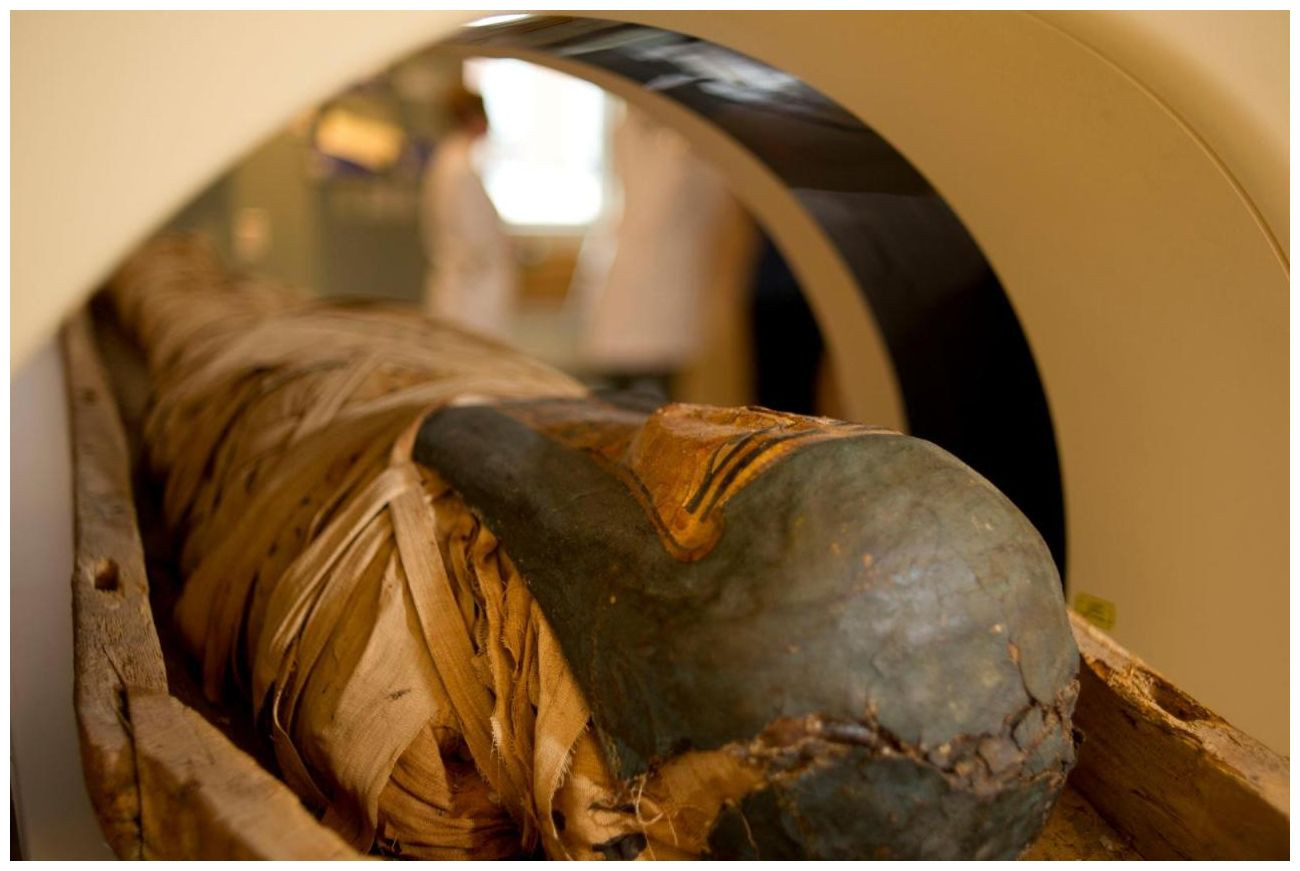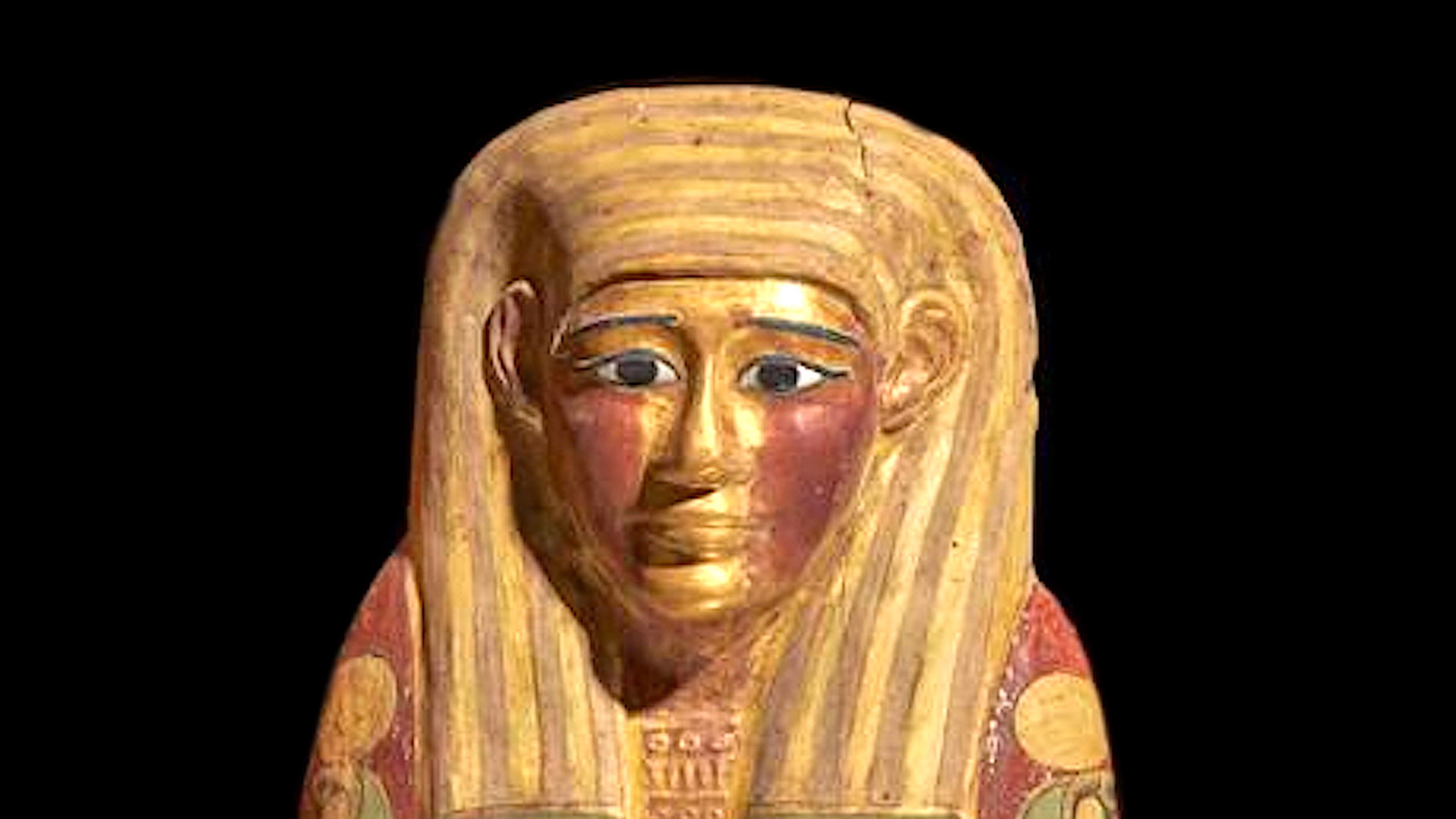Scientists now have an explanation for the “Screaming Woman” mummy after using CT scans to perform a “virtual dissection”. It turns out she may have died in agony and experienced a rare form of muscular stiffening, called a cadaveric spasm, that occurs at the moment of death.
The Mystery of the 'Screaming Woman' Mummy
Her body was well preserved, being embalmed roughly 3,500 years ago during ancient Egypt’s glittering New Kingdom period using costly imported ingredients such as juniper oil and frankincense resin, Saleem added.
“In ancient Egypt, the embalmers took care of the dead body so it would look beautiful for the afterlife. That’s why they were keen to close the mouth of the dead by tying the jaw to the head to prevent the normal postmortem jaw drop,” Saleem said.
But the quality of the embalmment ingredients “ruled out that the mummification process had been careless and that the embalmers had simply neglected to close her mouth. In fact, they mummified her well and gave her expensive funerary apparels – two expensive rings made of gold and silver and a long haired-wig made from fibres from the date palm,” Saleem added.
“This opened the way to other explanations of the widely opened mouth – that the woman died screaming from agony or pain and that the muscles of the face contracted to preserve this appearance at the time of death due to cadaveric spasm,” Saleem said. “The true history or circumstances of the death of this woman are unknown, hence the cause of her screaming facial appearance cannot be established with certainty.”
Cadaveric Spasm: A Rare Phenomenon
Cadaveric spasm, a poorly understood condition, occurs after severe physical or emotional suffering, with the contracted muscles becoming rigid immediately following death, Saleem said.
“Unlike postmortem rigor mortis, cadaveric spasm affects only one group of muscles, not the entire body,” Saleem added.
Asked whether the woman may have been embalmed while alive, Saleem added, “I don’t believe that this is possible.”
Saleem was unable to determine how the woman died, saying: “We frequently cannot determine the cause of death in a mummy unless there is CT evidence of fatal trauma.” Saleem cited evidence of a fatal head injury, slit neck and heart disease in three royal mummies.
The 'Screaming Woman's' Final Moments
The mummy was inside a wooden coffin in a burial chamber beneath Senmut’s family tomb. Her identity has not been determined but her jewellery – the gold and silver rings with images of scarab beetles, a symbol of resurrection, made of the gemstone jasper – showed her socioeconomic status.
“She was likely a close family member to be buried and share the family’s eternal resting place,” Saleem said.
The study revealed details of her wig. Its spiral braids were treated with the minerals quartz, magnetite and albite to harden them and provide the black colour indicative of youth. Her natural hair had been dyed with henna and juniper oil.
Screaming Mummies: A Global Phenomenon
A number of ancient mummies, in Egypt and the Americas, have been found with facial expressions resembling a scream – eerily similar to Norwegian painter Edvard Munch’s The Scream.
“I use this painting in my public lectures about the screaming mummies,” Saleem said. – Reuters
A Time Capsule of Agony
The “Screaming Woman” is a fascinating case study that sheds light on the complex and often mysterious nature of death in ancient Egypt. While the exact cause of her death remains unknown, the evidence points to a painful and agonizing end, captured forever in the frozen expression of her face. Her story serves as a reminder that even in death, there are still secrets to uncover and stories to tell.
The “Screaming Woman” mummy is a chilling testament to the power of human emotion, and the enduring mystery of death. Despite the passage of thousands of years, her anguish continues to resonate with us today, raising questions about life, death, and the eternal human condition.


















